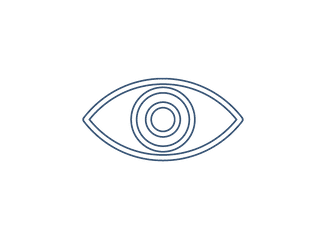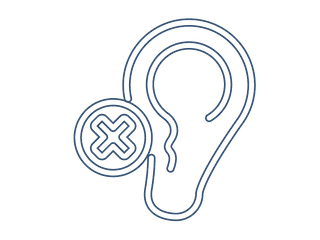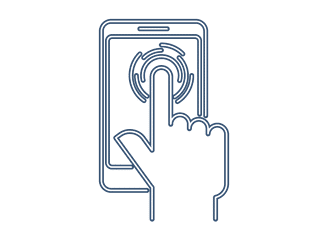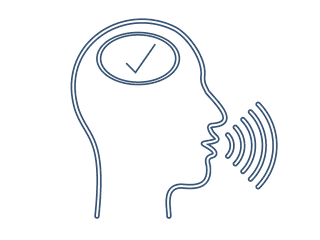Digital accessibility writer
Helping you create accessible web content
Small changes that make a big difference
Digital accessibility is best built into the foundations of your website. But I can help make your existing site more accessible through better content creation processes.
As a professional writer who understands web content accessibility guidelines (WCAG), I prepare your copy in the most accessible way your site structure allows.
How I help
- Correctly formatted alt tags and image descriptions
- Heading structures that support assistive tech such as screen readers
- Clear and descriptive links
- Video captions and audio transcripts
- Advice on colour contrast issues
- Accessibility audits to uncover non-structural changes you can make now
- Accessibility statements that set out how you plan to improve your site
- Checklists to ensure content produced in-house is as accessible as possible
Do you know about the international web accessibility standards?
The Web Content Accessibility Guidelines (WCAG) are internationally recognised standards published by the Web Accessibility Initiative of the World Wide Web Consortium (W3C) and developed in cooperation with individuals and organisations around the world.
In Australia, web accessibility is embedded in our Disability Discrimination Act and Australian Government agencies are required to meet WCAG 2.0 Level AA as a minimum.
My approach to accessible content is simple
Plain English, clean layout, and correctly tagged copy and images.
For more technical projects such as new sites, web redevelopments, and accessible PDF publications, I have a network of accessibility-accredited web developers and document specialists to ensure your website and digital documents meet the needs of all your visitors.
Who benefits from accessible web content?
1 in 6 Australians identify as living with disability.
At the same time, a global survey of the top 1 million home pages found 96.3% had accessibility errors.
Can you afford to lose customers because they can’t access your web content?

Visual
Blind or vision-impaired people need correctly tagged and structured online content. This allows screen reader technology to quickly and accurately navigate the content.

Hearing
Deaf or hearing-impaired people use captions and transcripts to gain meaning from video and audio content, including podcasts.

Motor
Mouse navigation does not suit all users. People who can’t use their hands might use assistive technologies such as alternative keyboards, eye control, sip/puff switches, or other adaptive hardware. Correctly tagged and structured online content helps these technologies work effectively.

Cognitive
People with learning and processing differences benefit from uncluttered screen content, plain language, and consistent navigation.
Not only those with disability benefit
- Transcripts help people skim information.
- Captions are useful in noisy environments or when turning on sound is not appropriate.
- Larger font and navigation buttons help people with age-related vision or hand tremors.
- Audio alternatives can be useful in low-light situations.
- Plain language respects people with lower literacy or recent arrivals to Australia.
The benefits and conveniences are countless. By making your digital content as accessible as possible for people with permanent disabilities, you help all users.
Accessibility is about user experience
With accessible content, you’ll gain happier customers and better organic search results.
Search engines such as Google reward sites that are helpful and user-friendly. So improving accessibility also improves your site’s SEO.
Let your community know accessibility matters
No matter where you are on your accessible content journey, let people know.
An accessibility statement communicates your commitment to a more accessible website for all your users.
It sets out the accessibility standards you are aiming for, as well as any known issues and how you are working to address them.
Accessibility statements also give users a way to provide feedback on problems they encounter while using your site.
Ready for accessible web content?
Choose from the packages below, or contact me to discuss your specific needs.
Accessibility statement
$350 + GST (300-500 words)
Includes:
- 30-minute video conference to discuss your accessibility goals (in person within the Geelong region)
- Accessibility statement drafted in your tone of voice
- Unlimited amends within 14 days of the first draft
- Professional proofreading
- Accessibility-compliant heading structure, layout, and link text
- Alt tags for supplied images
- The final version is supplied in a copy deck document with instructions for use.
Accessibility audit & content clean-up
$1410 + GST
(5 pages, 400-500 words per page)
Includes:
- Accessibility audit of five web pages
- Audit report and priority action list
- 30-minute video conference to discuss your accessibility goals and audit findings
- Corrections applied to heading structure, image tags, and links
- Copy edited for plain English
- Suggestions for any colour contrast issues
- Unlimited amends within 14 days of the first draft
- Professional proofreading
- The final version is supplied in a copy deck document with instructions for use.
Please note, this is not a WCAG-accredited technical audit.
